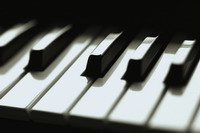Piano Sheets > John Sebastian Sheet Music > Day Dream (ver. 1) Piano Sheet
Day Dream (ver. 1) by John Sebastian - Piano Sheets and Free Sheet Music

About the Song
How to read free sheet music effectively If you are starting out learning how to play piano one of the first things is to learn how to read sheet music for piano. This includes usage of various concepts like treble clefs, bass clefs, key signature and ability to understand actual music notes.
The two clefs
When it comes to piano notes there are two kinds of clefs. Every clef will have a different note in the space and line. The notes typically begin from A and end with G and repeating the pattern again. Starting a piano sheet from C would then take you to D and then E. when it comes to reading sheet music it takes a little more practice and patience. You would need to memorize the music notes through acronyms to make it easier.
(More...)
Download this sheet!
About the Artist

Random article
How to read free sheet music effectively If you are starting out learning how to play piano one of the first things is to learn how to read sheet music for piano. This includes usage of various concepts like treble clefs, bass clefs, key signature and ability to understand actual music notes.
The two clefs
When it comes to piano notes there are two kinds of clefs. Every clef will have a different note in the space and line. The notes typically begin from A and end with G and repeating the pattern again. Starting a piano sheet from C would then take you to D and then E. when it comes to reading sheet music it takes a little more practice and patience. You would need to memorize the music notes through acronyms to make it easier.
(More...)
